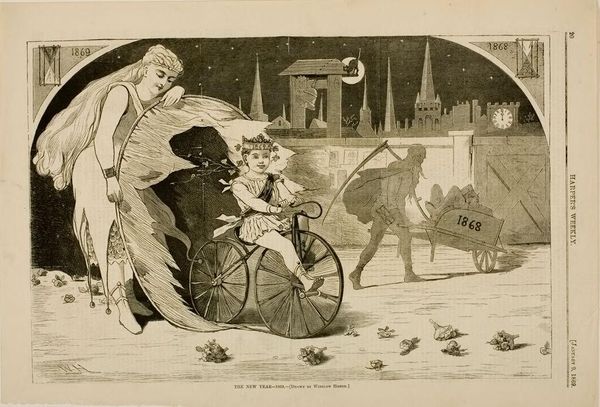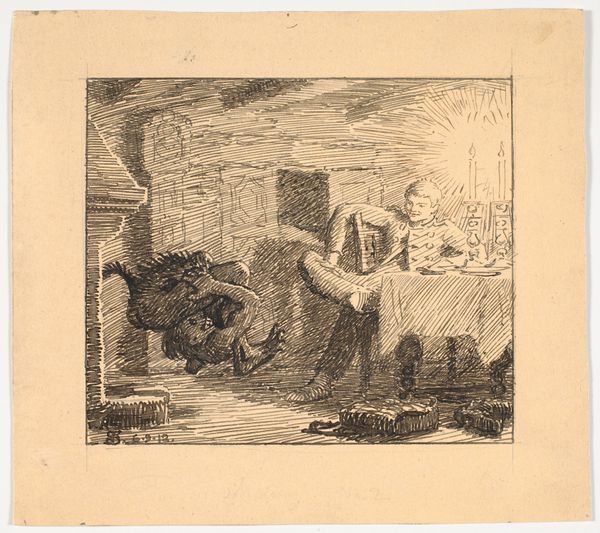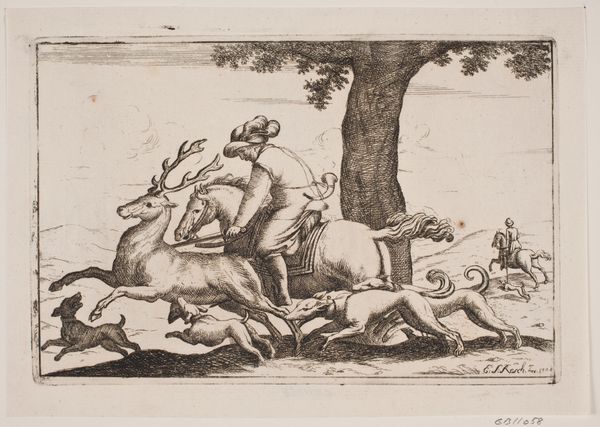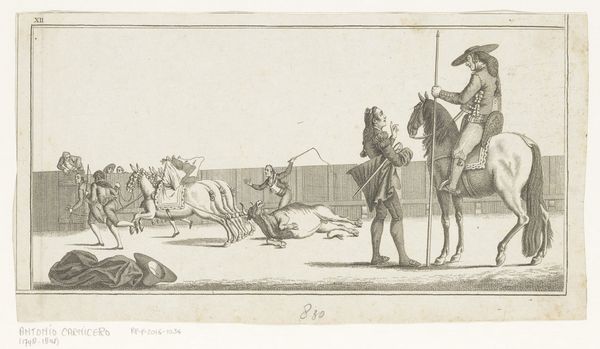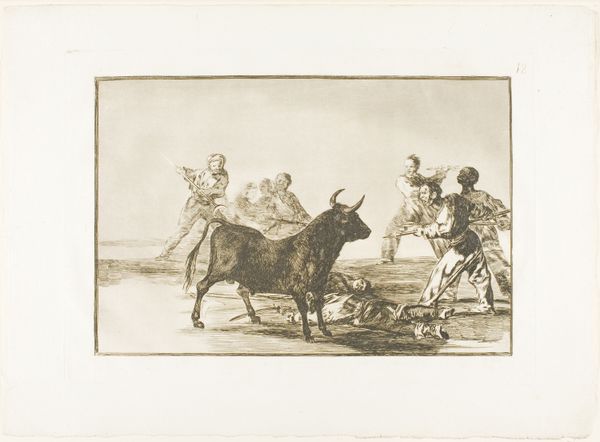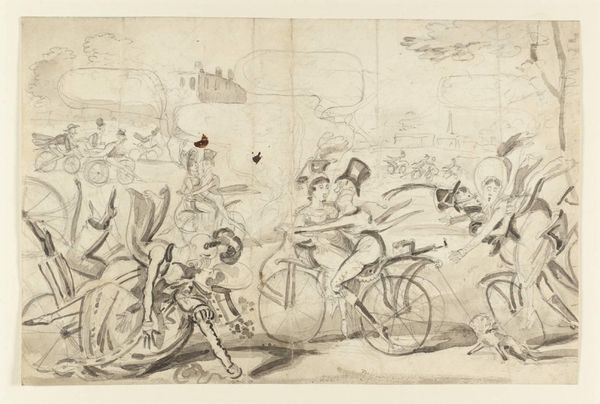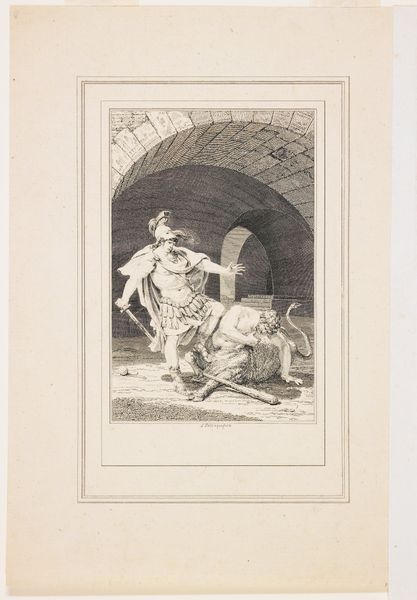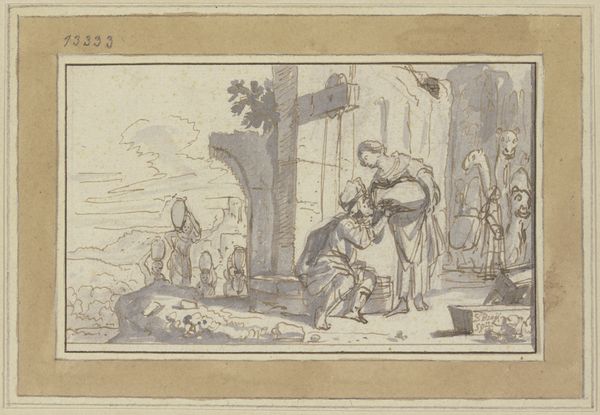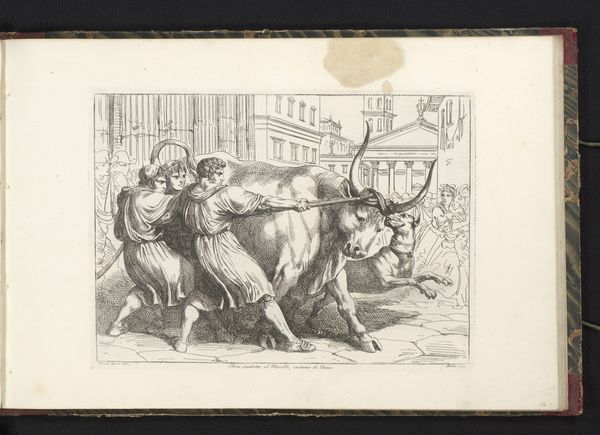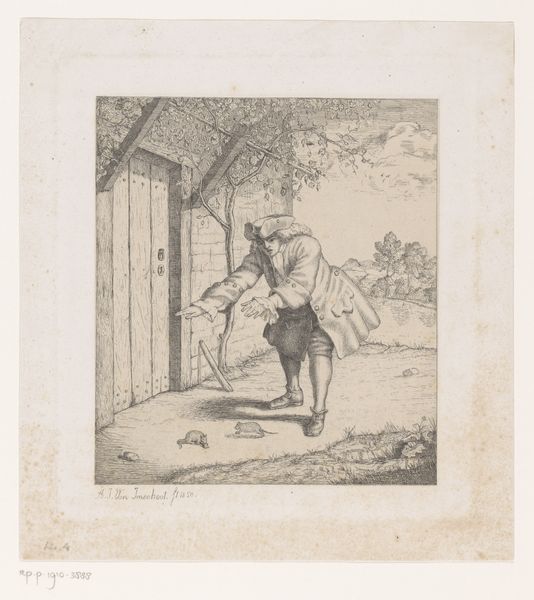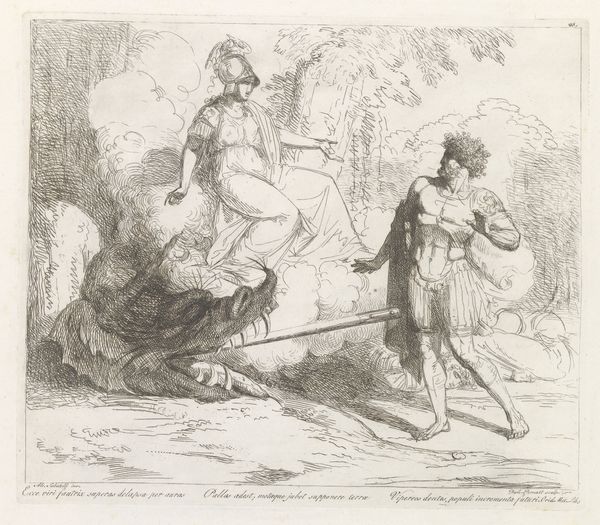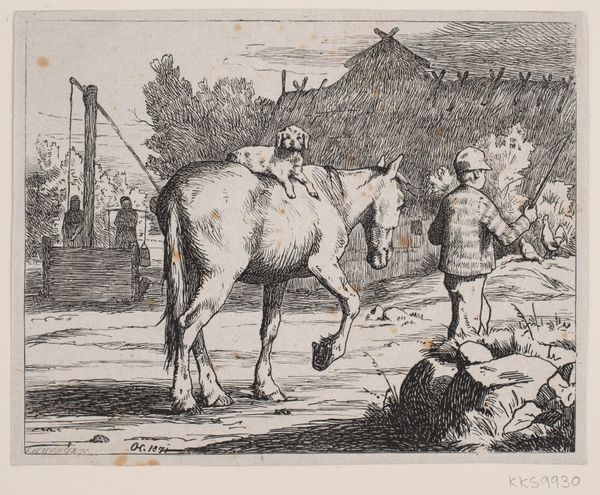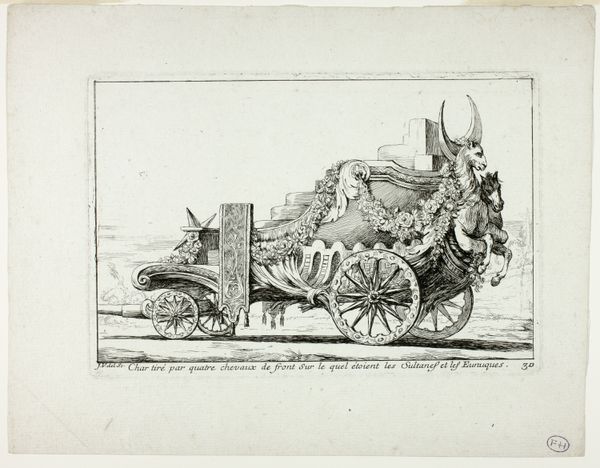
print, woodcut, wood-engraving, engraving
#
narrative-art
# print
#
landscape
#
woodcut
#
history-painting
#
wood-engraving
#
engraving
#
watercolor
Dimensions: 9 1/16 x 13 3/4 in. (23.02 x 34.93 cm) (image)
Copyright: Public Domain
Curator: Winslow Homer's 1869 wood engraving, "The New Year," offers a fascinating glimpse into the past, particularly regarding shifting temporal perceptions in post-Civil War America. You can find this print at the Minneapolis Institute of Art. Editor: My initial feeling is a sense of wistful melancholy mixed with expectation. There is this fascinating duality between what's being left behind and what’s coming, visualized in these symbolic figures. Curator: It certainly does present a complex tableau. You see Father Time pushing the departing year, 1868, toward the gates, and then the allegorical figure of the departing year alongside an infant symbolizing 1869. Note the hourglass representing time passed, compared to the hopeful innocence of the New Year, astride his bicycle. Editor: Absolutely, and this engraving acts almost as a form of political commentary. The aftermath of the Civil War loomed large, so I think there is a collective hoping to usher out the past along with associated societal struggles, making way for fresh perspectives, however naively innocent. Even the receding buildings evoke that loss. Curator: The cityscape definitely suggests societal weight and the passing of grand structures, while the allegorical figures are in the foreground embodying ideas about beginnings, which offers a stark and purposeful contrast. What draws me in is how the use of symbols resonates in terms of individual versus collective understandings. Are those shed petals signs of winter? Mourning? Abandonment? Editor: That visual uncertainty you described invites us to meditate on these symbolic choices. They evoke broader historical moments in American reconstruction, economic restructuring, and racial inequality, all viewed through a critical lens examining social justice and how power dynamics impact this cultural and seasonal tradition. Curator: I find that insightful! Thank you for this broader historical view. Considering the symbolic details and how the print interacts with that complex period enhances my appreciation and understanding of the art’s longevity. Editor: Yes, considering its cultural meanings, even beyond just a seasonal symbol, allows us to contemplate progress. I love thinking about the connection between past realities and aspirations toward equity and fairness for the years to come.
Comments
No comments
Be the first to comment and join the conversation on the ultimate creative platform.
